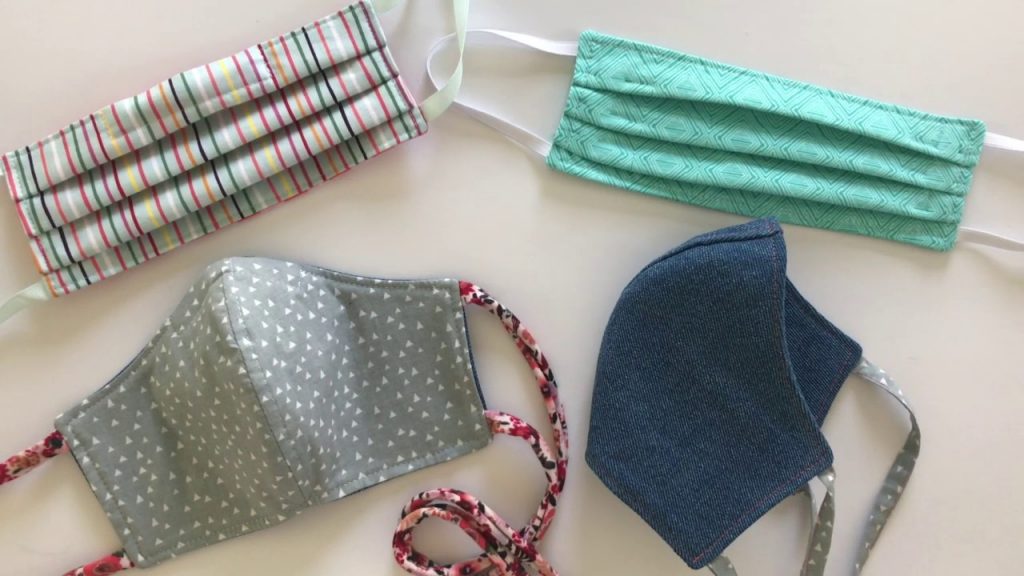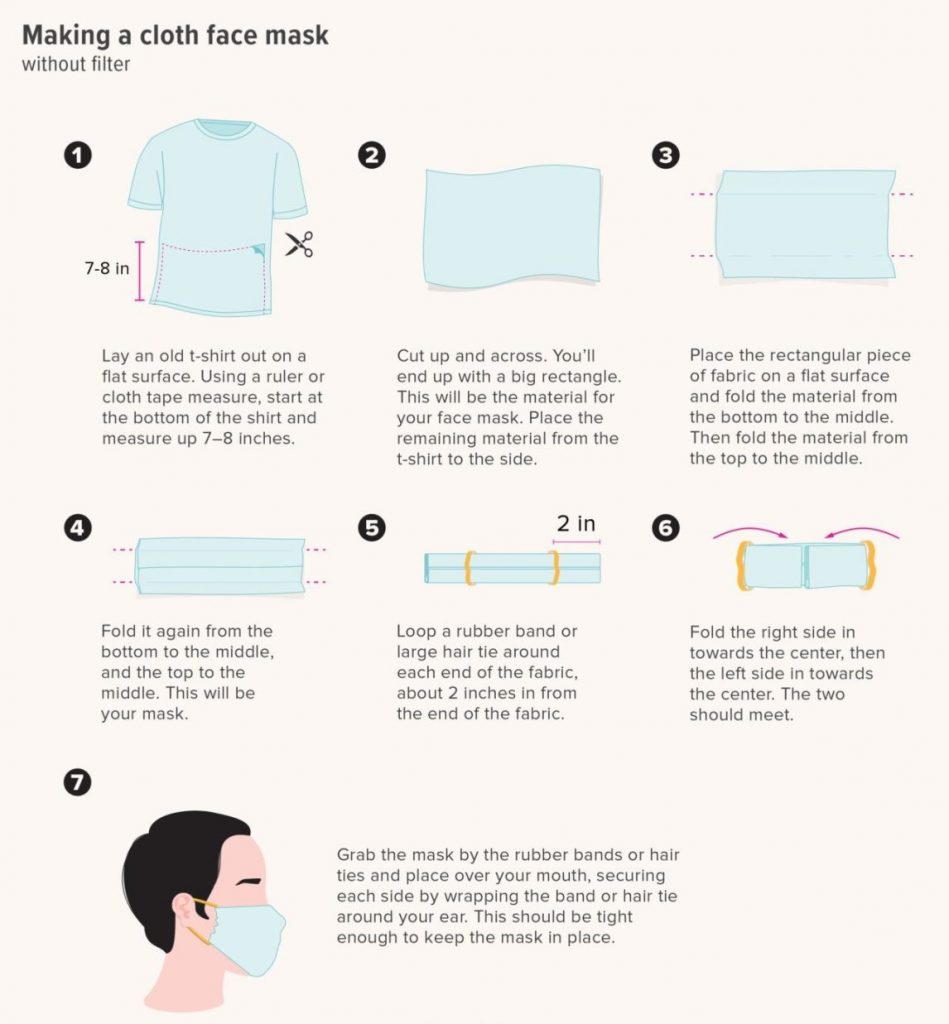
Numerous producers have requested an example to sew constructed careful mask for emergency clinics and their networks. The DIY design in this post will encourage you to make a material lined masks with versatile ear loops or fabric ties.
The fabric masks can be made with an inside pocket in which you can embed extra channel material.
On the off chance that you can’t discover or don’t have any desire to utilize flexible ear circles, there are extra guidelines for making and utilizing texture ties. You can make elastic ties or fabric loops from cotton fabric, shirt material, or utilize instant inclination official.
A printable adaptation of these example directions is accessible at the base of the post. Face mask manufacturers in Bangladesh mostly use cotton knit fabric as this is their common locally made material.
Is there a requirement for Fabric Face Masks?
At present, the gracefully of careful masks is at a basic untouched low all through the whole country.
Requests for the standard dispensable masks utilized in emergency clinics are put in a rain-check for, and there is an appeal for defensive gear for human services laborers.
As indicated by the CDC, fabric masks are an emergency reaction choice when different supplies have been depleted.
Because of these worries, numerous medical clinics the nation over have mentioned natively constructed careful maks as a crisis band-aid measure.
How to Sew a Surgical Face Mask for Hospitals – Free Pattern
This is very important to keep in mind when you will sew face mask that it must follow medical grade like N95 which will be used for patients and health care staffs.
A Significant Difference
Face masks which are made in home won’t be effective 100% like N95 with proper filtration property recommended by WHO, and also can’t be used as PPE.
Relatively, they are meant:
To support medical people if they lack of proper masks.
To reduce the rate of infection in community where this is difficult to maintain proper social distance.
The Right Textile For Making A Face Mask
Scientists at Cambridge University confirmed the efficiency of a comprehensive range of domestic materials for procedure in homemade masks. They dignified how well the household supplies could capture and screen small elements.
Test information shows that the most ideal decisions for DIY textile mask are cotton t-shirts, pillowcases, or other cotton products. Utilizing a two fold layer of material for your DIY mask includes a little increment in filtration adequacy.
Other examination has discovered that best veils were built of two layers of heavyweight “quilters cotton” with a string check of in any event 180, and had a thicker and more tight weave.
This example has 2 layers of fabric, and an inward pocket wherein you can include extra layers of dispensable filtration material whenever wanted.

Stage 1: Sew to the top side, with pocket
Wrinkle the surface square shape down the center, with the right sides facing each other.
Sew along the top 8.5″ width edge, using an enormous 5/8″ wrinkle payment. Leave a 3″- 4″ opening in the point of convergence of this wrinkle to make an opening for the channel pocket, and to allow the cloak to be turned right side out in the wake of sewing. In the picture above, I’ve meant this opening with pins.
Update: Some people are believing that its less difficult to install/oust additional divert material in case they make a greater opening. As opposed to leaving a 3″ opening, you could make a 4″ inch opening.
Next, turn the surface so the wrinkle with the pocket opening is engaged in one side. Using an iron, press the wrinkle open.
Wrinkle the plenitude wrinkle reward under, encasing the unrefined edge of the surface. Topstitch or befuddle line along each side of this wrinkle to finish the edge. This will help shield the surface from fraying when you expansion and remove any channels.
Stage 2: Pin Elastic or Fabric Ties
On account of Using Elastic:
Pin the slightest bit of adaptable to each side of the spread, one end to the top corner and one end to the base corner of the surface square shape. This will make the ear circle once the spread is turned right side out and wrinkled. Recognize the pieces of the deals around 1/4″ to 1/2″ from the top and base corners of the surface.
The bit of flexible itself will be sandwiched between the two layers of surface. At the point when you turn the spread right side out, the flexible will be ostensibly.
Repeat this method on each side to make two ear circles.
Stage 3: Sew the Sides, Securing the Ties
With a 3/8″ wrinkle settlement, sew each side of the facemask. Backstitch over the adaptable or surface ties to ensure about them. Trim the corners with scissors so it will be more straightforward to turn the cloak right side out. Becare not to incidentally cut the join.
Turn the shroud right side out and press with an iron. You can use a pencil to push out the corners.
Stage 4: Make the Pleats
Make the spread with three evenhandedly isolated lines. To do this, you can measure and engraving with a water-dissolvable surface pen. Or then again, you can do what I did, and overlay the shroud in quarters – cover the sides to bargain, and subsequently wrinkle again down the center. Use an iron to make a wrinkle.
Use your markings to make three similarly scattered 1/2″ wrinkles. Nail the folds down, guarantee all wrinkles are going up against a comparative course. Sew at the edges to ensure about the wrinkles. I like to sew down the sides twice, just to guarantee.
Right when the spread is worn, the wrinkles should open downwards to shield any particles from social affair in the cover pockets.
What might you have the option to use as a channel?
It is basic to the point that everyone gets that while wearing a fabric face maks can offer some level of protection, it can’t make sure about against diseases a comparative way that a N95 spread can.
A wide scope of kinds of channels have been suggested, like coffee channels, felt, and vacuum channel sacks. Not these channels are amazing, and few out of every odd one of them are shielded.
What Type of Fabric is Suitable For Preparing Face Masks?
Cotton
This is the most common and available material found at home to make face masks. Cotton is available online and also this is good material for this purpose. Researchers said that its micro fibres can stop the virus particles on the way through. Some scientists also found that denim fabric and bed sheets with 120 threads count can capture more than 90% of big particles and 24-28% of small particles. However, cotton canvas fabric can filter almost 85% of large particles with 19% of small onces. But knit fabrics can’t capture much small particles. Visit this website to find various cotton canvas twill fabrics.
Nylon
As per the Smart Air test, 70D Nylon taffeta fabric can filter about 78% of large things and 12% of small particles, and it must be breathable. The more the thin yarn you will use the more you can filter small particles.
Paper Materials
If paper materials like towel tissue and shopping bag non-woven material are breathable, they can be used for masks and it will give good protection.
Natural Fibres
Fabric made from natural fibres like wool, cashmere and ramie have poor filtration capabilities.
Benefits of Fabric Face Maks
While reusable face masks may not be as successful as clinical evaluation ones, there are some different positives to consider:
- Reusable – you can wear, wash and reuse them
- Washable – popping your veil in a 60°C wash will murder any COVID-19 particles
- Eco-friendly – you just need a couple to last you through the pandemic
- They’ll keep you from (unwittingly) spreading the infection
- They won’t upset or effect the clinical evaluation veil gracefully
Bangladesh Garments Manufacturers Turning Coronavirus Pandemic into Business
Facing garments order cancellation and losses as Western brands collapsed in this pandemic, many Bangladeshi manufacturers have been turning their production lines into new production like masks, gloves, gowns and PPE for export.
Many workers have lost their jobs and few manufacturers have closed their factories, therefore, this new opportunity is helping some manufacturers to survive and many workers to continue their job.
Over the past two decades Bangladesh became the world’s second largest garment exporting country after China by making clothes for world brands like Primark, Zara and H&M.